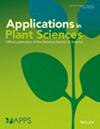Polyploidy and the evolution of phenotypic integration: Network analysis reveals relationships among anatomy, morphology, and physiology
Abstract
Premise
Most traits are polygenic and most genes are pleiotropic, resulting in complex, integrated phenotypes. Polyploidy presents an excellent opportunity to explore the evolution of phenotypic integration as entire genomes are duplicated, allowing for new associations among traits and potentially leading to enhanced or reduced phenotypic integration. Despite the multivariate nature of phenotypic evolution, studies often rely on simplistic bivariate correlations that cannot accurately represent complex phenotypes or data reduction techniques that can obscure specific trait relationships.
Methods
We apply network modeling, a common gene co-expression analysis, to the study of phenotypic integration to identify multivariate patterns of phenotypic evolution, including anatomy and morphology (structural) and physiology (functional) traits in response to whole genome duplication in the genus Brassica.
Results
We identify four key structural traits that are overrepresented in the evolution of phenotypic integration. Seeding networks with key traits allowed us to identify structure–function relationships not apparent from bivariate analyses. In general, allopolyploids exhibited larger, more robust networks indicative of increased phenotypic integration compared to diploids.
Discussion
Phenotypic network analysis may provide important insights into the effects of selection on non-target traits, even when they lack direct correlations with the target traits. Network analysis may allow for more nuanced predictions of both natural and artificial selection.



 求助内容:
求助内容: 应助结果提醒方式:
应助结果提醒方式:


